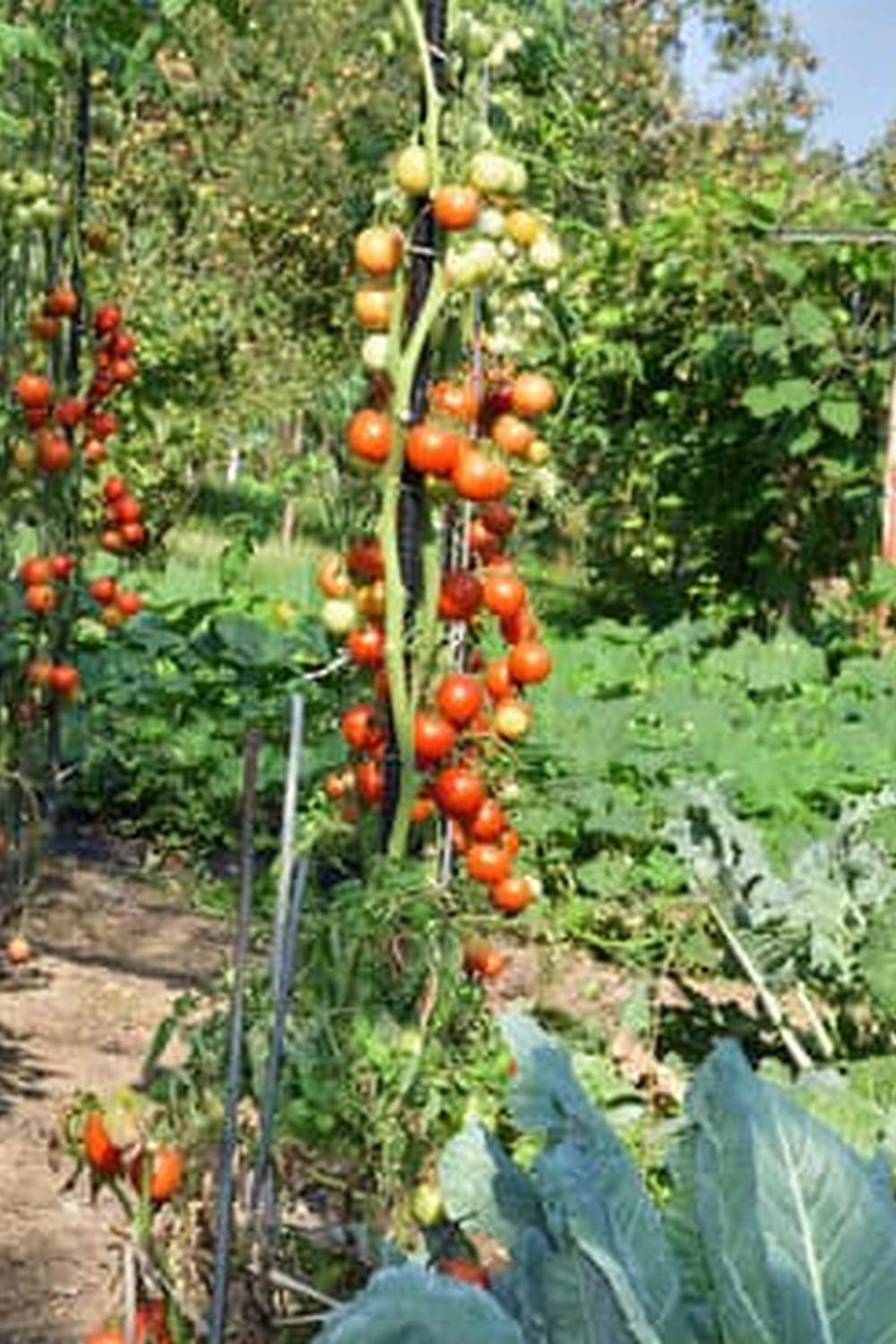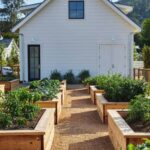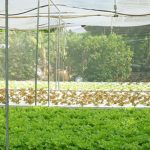Backyard vegetable gardening blogs have seen a significant rise in popularity in recent years as more people are turning to gardening as a way to grow their own fresh produce, connect with nature, and lead a more sustainable lifestyle. These online platforms offer a wealth of information, tips, and inspiration for individuals looking to start their own backyard vegetable garden.
With the increasing interest in self-sufficiency, organic living, and environmental consciousness, it is no surprise that backyard vegetable gardening blogs have become a valuable resource for beginners and seasoned gardeners alike.
One of the key benefits of starting a backyard vegetable garden is the ability to grow your own fresh and healthy produce right at home. Not only does this provide a sense of satisfaction and connection to where your food comes from, but it also allows you to control the quality of the fruits and vegetables you consume. Additionally, gardening can be a therapeutic and stress-relieving activity that promotes physical activity and mental well-being.
For those looking to start their own backyard vegetable garden but unsure where to begin, there are several must-follow blogs that offer valuable guidance and insights. From practical tips on soil preparation and plant care to creative ideas for maximizing space and optimizing yields, these blogs cater to beginners looking to cultivate their green thumb.
By learning from experienced gardeners through these online resources, aspiring gardeners can build the knowledge and confidence needed for successful vegetable growing ventures in their own backyards.
Benefits of Starting a Backyard Vegetable Garden
Starting a backyard vegetable garden can provide numerous benefits for both you and your environment. Here are some reasons why you should consider starting your own vegetable garden in your backyard:
- Fresh and Healthy Produce: By growing your own vegetables, you have access to fresh, nutritious produce right outside your door. You can ensure that no harmful chemicals or pesticides are used in the growing process, leading to healthier options for you and your family.
- Cost-Effective: Growing your own vegetables can also be a cost-effective alternative to constantly buying from grocery stores. With a little investment in seeds, soil, and tools, you can yield a bountiful harvest throughout the season without breaking the bank.
- Stress Relief and Physical Activity: Gardening has been known to reduce stress levels and improve mental well-being. Spending time outdoors tending to your plants can be a therapeutic activity that helps disconnect from the hustle and bustle of everyday life. Additionally, gardening provides a form of physical activity that promotes overall health and wellness.
In addition to these benefits, backyard vegetable gardening also allows you to customize what you grow based on personal preferences and dietary needs. Whether you want to focus on growing organic produce or unique heirloom varieties, having your own garden gives you the flexibility to experiment with different types of vegetables. As such, exploring backyard vegetable gardening blogs can provide valuable insights, tips, and inspiration to help enhance your gardening experience.
Ultimately, starting a backyard vegetable garden is not just about reaping the rewards of fresh produce-it’s also about connecting with nature, learning new skills, and fostering a deeper appreciation for where our food comes from. So roll up your sleeves, get your hands dirty, and start reaping the benefits of cultivating your own little piece of green paradise right in your backyard.
Must-Follow Backyard Vegetable Gardening Blogs for Beginners
Are you looking to start your own backyard vegetable garden but don’t know where to begin? One of the best resources to turn to for guidance and inspiration are backyard vegetable gardening blogs. These online platforms have become increasingly popular in recent years, offering a wealth of information, tips, and tricks for beginners looking to grow their own produce right at home.
One must-follow backyard vegetable gardening blog for beginners is “The Beginner’s Garden Blog,” which provides step-by-step guides on how to plan, plant, and maintain a successful garden. The blog covers topics such as soil preparation, seed starting, pest control, and harvesting techniques. Another valuable resource is “A Way To Garden,” which offers practical advice on organic gardening practices, plant selection, and sustainable gardening methods.
For those interested in exploring different gardening styles and techniques, “Epic Gardening” is a fantastic blog that covers a wide range of topics from container gardening to vertical gardening. This blog also includes detailed product reviews and recommendations for tools and equipment needed for successful backyard vegetable gardening. Whether you are a novice gardener or have some experience with growing vegetables, these blogs provide valuable insights and support to help you cultivate a thriving garden in your own backyard.
As you embark on your journey into backyard vegetable gardening, remember that each blog offers a unique perspective and set of experiences. Take the time to explore different blogs, interact with other gardeners in the community forums, and experiment with new techniques in your own garden. With dedication, patience, and the guidance of these must-follow blogs, you’ll be well on your way to enjoying the fruits (and vegetables) of your labor in no time.
Tips and Tricks for Successful Backyard Vegetable Gardening
Planning Your Garden Layout
One of the key tips for successful backyard vegetable gardening is planning your garden layout effectively. Consider factors such as sunlight exposure, soil quality, and spacing requirements for different vegetables. Creating a map or sketch of your garden can help you visualize where each type of vegetable will go and ensure that they have enough space to thrive. Additionally, rotating crops each season can help maintain soil fertility and prevent disease buildup.
Watering and Fertilizing
Proper watering and fertilizing are essential aspects of maintaining a healthy backyard vegetable garden. It’s important to water consistently, especially during hot summer months, but be cautious not to overwater as it can lead to root rot. Additionally, choosing organic fertilizers or compost can provide essential nutrients to your plants without harmful chemicals. Understanding the watering and nutrient needs of different vegetables can help you tailor your care routine accordingly.
Pest Control Measures
Dealing with pests in your backyard vegetable garden can be frustrating, but there are several natural methods you can use to protect your plants. Companion planting certain herbs or flowers alongside your vegetables can repel pests or attract beneficial insects that prey on them.
Additionally, regular inspection of your plants for signs of pest damage can help you catch infestations early on before they spread to other plants in your garden. By implementing proactive pest control measures, you can keep your backyard vegetable garden healthy and thriving throughout the growing season.
How to Choose the Right Vegetables for Your Backyard Garden
When it comes to starting your own backyard vegetable garden, one of the crucial decisions you’ll have to make is choosing the right vegetables to plant. The key is to select crops that are well-suited for your specific growing conditions, climate, and available space. Before making any choices, take some time to research which vegetables thrive in your region and are suitable for beginners.
Consider starting with easy-to-grow vegetables like tomatoes, lettuce, cucumbers, and zucchini, which are ideal for beginners and don’t require too much maintenance. These vegetables are resilient and can produce a bountiful harvest even with minimal experience in gardening. Additionally, herbs such as basil, parsley, and mint are excellent options for those looking to add flavor and fragrance to their dishes while being relatively low-maintenance.
It’s also important to think about the amount of sunlight your backyard receives throughout the day. While most vegetables require at least 6-8 hours of direct sunlight daily, some leafy greens like lettuce and spinach can tolerate partial shade.
Take note of your garden’s sun exposure when selecting vegetables to ensure they receive the necessary light for healthy growth. Visiting reputable backyard vegetable gardening blogs can provide you with valuable insights and recommendations on the best vegetable varieties for your specific garden conditions.
Personal Stories and Experiences From Successful Backyard Vegetable Gardeners
In the world of backyard vegetable gardening, personal stories and experiences from successful gardeners can serve as a valuable source of inspiration and knowledge. Whether you are just starting out or looking to enhance your existing garden, learning from the journeys of others can provide you with insights and ideas to improve your own gardening endeavors. Here are some key points shared by experienced backyard vegetable gardeners:
- Trial and error: Many successful gardeners emphasize the importance of trial and error in their journey towards a thriving vegetable garden. Understanding that not every plant will flourish in your specific environment is crucial, and being open to experimenting with different techniques and varieties can lead to great results.
- Time management: Gardening requires dedication and commitment, but it is also important to strike a balance between tending to your plants and other aspects of life. Successful gardeners often share tips on how to efficiently manage their time in the garden while still taking care of other responsibilities.
- Community support: Building connections with other like-minded individuals who share your passion for gardening can be incredibly rewarding. Many successful backyard vegetable gardeners participate in local gardening groups or online communities where they can exchange advice, resources, and encouragement.
By reading about the personal experiences of seasoned gardeners, you can gain valuable insights into their successes, challenges, and strategies for creating a flourishing backyard vegetable garden. While each gardener’s journey is unique, there are common themes that can help guide you towards a more bountiful harvest in your own backyard oasis. So take the time to immerse yourself in the stories of these passionate individuals and let their wisdom inspire you on your own gardening adventures.
Tools and Equipment Needed for Backyard Vegetable Gardening
Starting a backyard vegetable garden can be a rewarding and fulfilling experience, but it’s essential to have the right tools and equipment to ensure success. By having the proper supplies on hand, you can maintain your garden efficiently and maximize your harvest. Below are some key items you’ll need for successful backyard vegetable gardening.
Garden Tools
One of the first things you will need is a basic set of garden tools. This includes a sturdy pair of gloves to protect your hands, a trowel for planting and transplanting, a shovel for digging holes and moving soil, and pruning shears for trimming plants. A watering can or hose with a sprinkler attachment is also essential for keeping your plants hydrated.
Soil and Fertilizers
Healthy soil is crucial for growing thriving vegetables in your backyard garden. Invest in high-quality potting mix or soil that is rich in nutrients to provide a good foundation for your plants. Additionally, consider using organic fertilizers to supplement the soil with essential nutrients throughout the growing season.
Support Structures
Depending on what vegetables you choose to grow, you may need support structures such as trellises, cages, or stakes. These are particularly important for vining plants like tomatoes, cucumbers, and peas, as they help keep the plants upright and improve air circulation around them. Make sure to install these structures early on to avoid damaging your plants later.
Having the right tools and equipment can make all the difference in maintaining a successful backyard vegetable garden. By investing in quality supplies from the start, you’ll be better equipped to handle any challenges that come your way and enjoy bountiful harvests throughout the growing season. Explore different options available on various backyard vegetable gardening blogs to find what works best for your specific garden needs.
Sustainable Practices in Backyard Vegetable Gardening
Implementing water conservation techniques is another sustainable practice that can help maintain a healthy backyard vegetable garden. This includes using drip irrigation systems to deliver water directly to the roots of plants, reducing evaporation and water waste. Collecting rainwater in barrels or installing a greywater system can also provide an alternative water source for your garden, minimizing the need for excess water consumption.
In addition, practicing crop rotation and companion planting can help naturally control pests and diseases in your backyard vegetable garden without relying on harmful chemicals. By rotating crops each season and planting mutually beneficial plant combinations, you can promote biodiversity in your garden and reduce the risk of pest infestations. These sustainable practices not only support the long-term health of your garden but also contribute to a more eco-friendly gardening approach overall.
| Sustainable Practice | Benefit |
|---|---|
| Composting | Creates nutrient-rich soil and reduces waste sent to landfills |
| Water Conservation Techniques | Minimizes water consumption through efficient irrigation methods |
| Crop Rotation & Companion Planting | Naturally controls pests and diseases without harmful chemicals |
Conclusion
As we conclude this discussion on backyard vegetable gardening, it is evident that the popularity of gardening blogs dedicated to this topic continues to soar. The wealth of information available online has made it easier than ever for beginners to start their own backyard vegetable garden. By exploring these blogs, individuals can access a treasure trove of knowledge, tips, and personal experiences shared by seasoned gardeners.
Starting a backyard vegetable garden not only offers the benefit of fresh produce but also provides a rewarding and therapeutic hobby. The process of planting, nurturing, and harvesting vegetables can be incredibly fulfilling for individuals of all ages. Additionally, the physical activity involved in tending to a garden promotes overall well-being and can serve as a form of relaxation amidst today’s hectic lifestyles.
In choosing to embark on a backyard vegetable gardening journey, individuals should remember that success often lies in trial and error. It is essential to choose the right vegetables for your specific climate and soil type while also incorporating sustainable practices. By arming themselves with the knowledge offered by reputable gardening blogs, novice gardeners can set themselves up for a fruitful and enjoyable experience cultivating their own backyard oasis of plants and produce.
So why wait? Start your own backyard vegetable garden today and join the thriving community of enthusiastic gardeners sharing their love for gardening through online platforms dedicated to this green-fingered pursuit.
Frequently Asked Questions
What Is a Good Layout for a Vegetable Garden?
A good layout for a vegetable garden should take into consideration factors like sunlight exposure, water accessibility, and plant spacing. It’s important to group vegetables with similar watering and sunlight needs together for optimal growth.
What Vegetables Are Easy to Grow in Backyard?
Several vegetables are easy to grow in a backyard garden, such as tomatoes, lettuce, cucumbers, peppers, and zucchini. These plants are relatively low-maintenance and don’t require specialized care to thrive in a home garden.
What Size Should a Vegetable Garden Be in the Backyard?
The size of a vegetable garden in the backyard depends on the available space and the gardener’s goals. A small raised bed or container garden can be suitable for growing a few veggies for personal consumption, while larger plots can accommodate more variety and quantity of crops.

If you’re looking to get into vegetable gardening, or are just looking for some tips on how to make your current garden better, then you’ve come to the right place! My name is Ethel and I have been gardening for years. In this blog, I’m going to share with you some of my best tips on how to create a successful vegetable garden.





